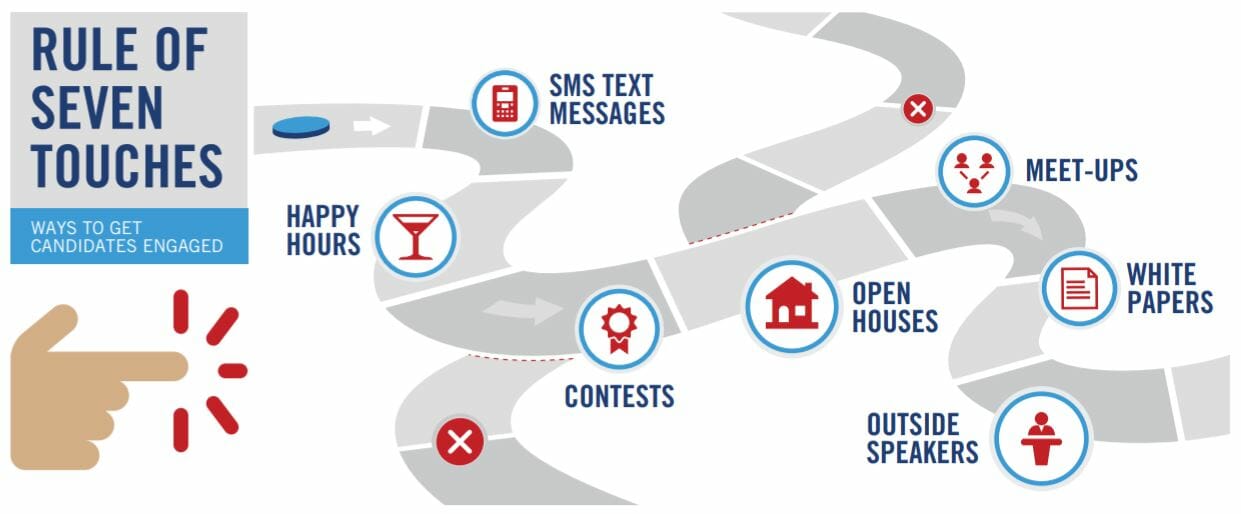If you’re recruiting in the cleared space, it’s no news that this is a tough time to be sourcing talent. But do you know what’s contributing to this hiring environment? Consider these facts:
- Security clearance wait times, while improving, have been at historic highs the past few years (If you want to know how we got here, this is a helpful read about the history of the security clearance process).
- Since 2013, the size of the cleared population is down 30%.
- There are more jobs requiring security clearance now than at any other time before.
With competition so fierce, recruiters can’t afford to take any options off the table – even if that means challenging old assumptions about how to attract talent. In the words of Evan Lesser, President and Founder of ClearanceJobs, “The chief problem we see with employers is that they’re recruiting in the same manner they’ve always done, and they’re not changing and reacting to new marketplace realities.”
But there’s good news: you have more tricks up your sleeve than you realize. They may not all work overnight, but they’re the best way to prepare for present and future success.
Recruiting Hack #1: Build a Talent Pipeline
By identifying candidate leads for future talent needs, you’re doing yourself a favor today that you’ll thank yourself for tomorrow. It’s easy to be crushed by the “tyranny of the urgent” and just deal with today’s immediate hiring needs, but it isn’t a long-term strategy. Someone on your team should always be looking ahead, sleuthing out the most eligible candidates, considering how they may fit future hiring needs. Look six to 18 months down the road and consider your hiring needs. You should also look back at the past six to 18 months and consider which candidates took the most time, money, and effort to hire. Those are the candidates you need to be adding to your pipeline today.
“But I’m already doing this…”
Let’s say you are playing the long game and searching for tomorrow’s talent today. Be sure to look beyond the obvious of making “connections” online and collecting resumes in a manila folder. Are you offering resources or programs to transitioning veterans at your local military base? Do you have inroads at local universities – or even high schools – to encourage young people to pursue careers in your industry? Think big.
Recruiting Hack #2: Nurture Prospective Candidates
The companies who are doing best in this tough environment are playing the long game. They nurture candidate leads just like a marketing team would nurture sales leads. With candidates in such high demand, don’t expect a candidate to reply to your first message – or maybe even your fourth. It takes time to build interest, awareness, and trust with cleared candidates. Consider the age-old marketing rule that it takes seven “touches” to make a sale. The idea is that multiple “touches” will warm candidates to your messaging.
“But I’m already doing this…”
You probably are already convinced that it takes more than one contact to stoke interest. Still, even multiple touches can fail if they’re not executed well. Be sure to reach out over different channels; email isn’t enough. Different people respond to different messages in different ways – so tailor your message to your audience. Is a senior systems engineer going to respond to the same message as an entry-level database administrator? Probably not – so be sure that your touches involve a mix of tailored, personal communications both online and in person.
Recruiting Hack #3: Engage With Candidates (At the right time, the right place, and in the right way)
All recruiters engage with candidates by the very nature of their jobs – but are you doing it in a way that gets your message through? Good engagement is similar to nurturing, but it’s more about the message than the method. True candidate engagement means spending time, one-by-one, building a grass roots rapport with the candidates in your pipeline. And since this is a security-conscious audience, any message should come with an awareness of the candidate’s security and privacy. That means not using tools like LinkedIn, which have repeatedly been used by adversary nations to gain intelligence on U.S. clearance holders. Be sure a candidate knows your name, your company, your job title, and where you found their information.
“But I’m already doing this…”
All recruiters engage with candidates by the very nature of their jobs – but are you doing it in a way that gets your message through? Apart from security concerns, consider what you’re projecting to the person you reach. Science has proven that people will be more invested in you if they can see your face. Are all of your candidate interactions impersonal, bulk messages? It’s easy to fire off an email, text, or instant message, but it’s only useful if it’s tailored, personal, and security-conscious. Talking with candidates live, and in real time is also key to building rapport. Being able to see an actual face and engage in a real-time conversation is critical for a security-conscious candidate. Regular, transparent communication will ease their concerns.





